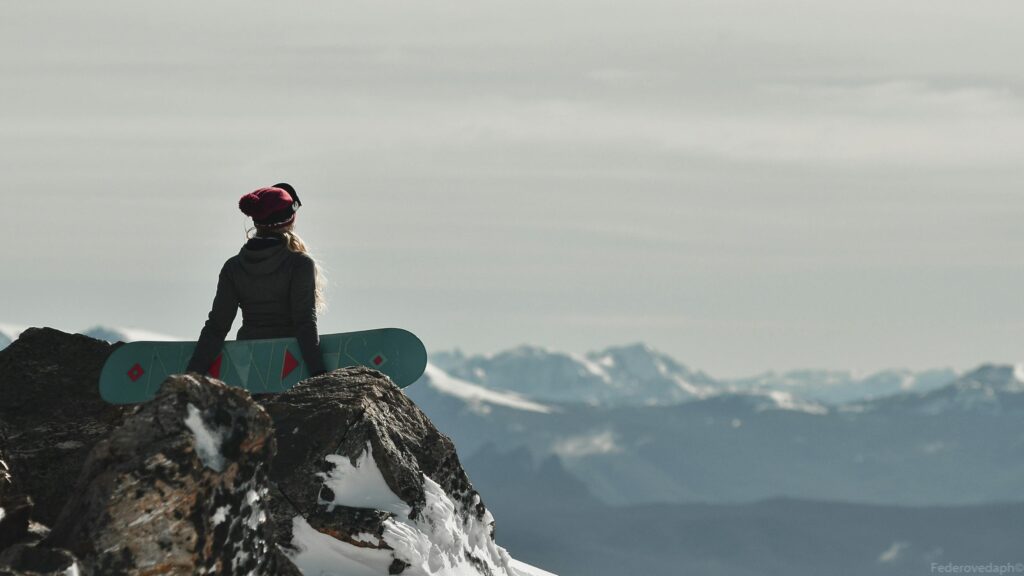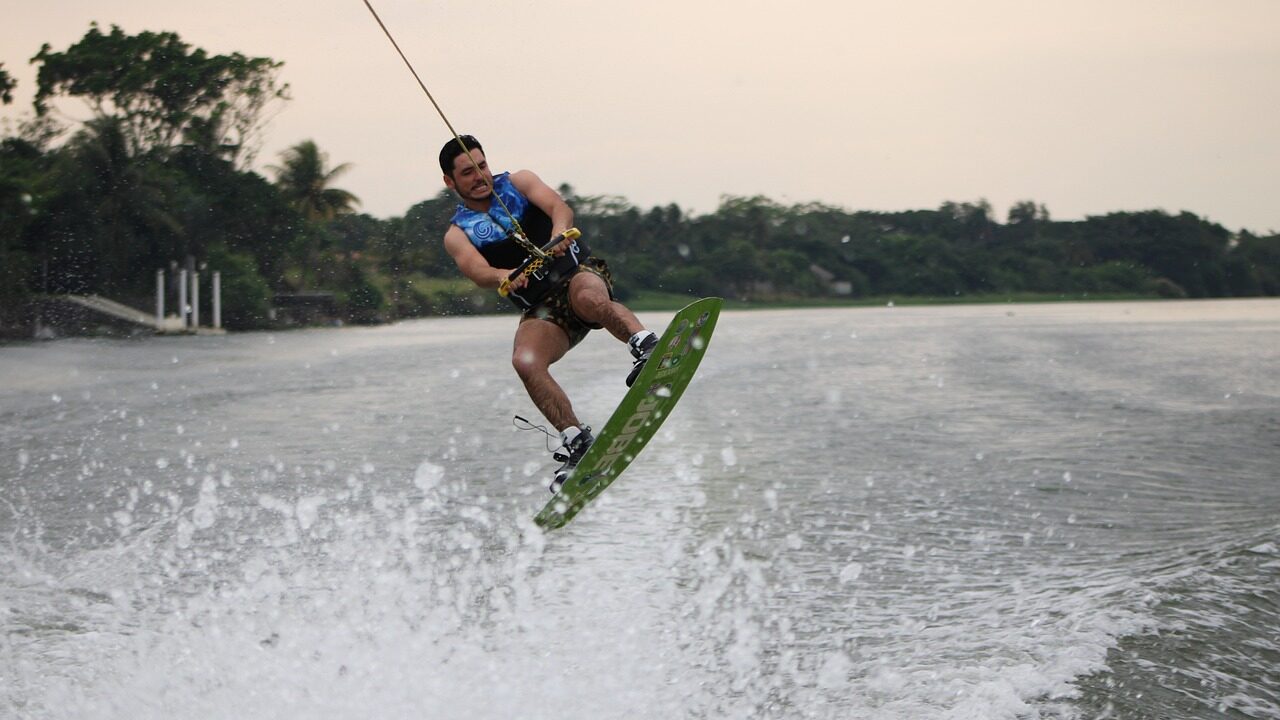
Table of Contents
Surfing and snowboarding, two exhilarating board sports that captivate the hearts of enthusiasts around the world. Whether you’re riding the waves on a sun-soaked beach or carving through fresh powder on a snowy mountain slope, there’s an undeniable thrill that comes with the art of balancing on a board. But is there a connection between these seemingly disparate activities? In this article, we’ll delve into the world of surfing and snowboarding, examining the intriguing question: Is surfing like snowboarding?
To answer this question, we’ll explore the shared elements that bind these sports together and the unique characteristics that set them apart. From the basics of body movements to the cultural influences that shape their communities, the parallels between surfing and snowboarding run deep. So, let’s ride the waves of curiosity and carve into the slopes of understanding as we unravel the similarities and differences between these two dynamic board sports.
I. Similarities Between Surfing and Snowboarding
Riding waves and carving down snow-covered slopes may seem worlds apart, but a closer look reveals striking similarities in the fundamental aspects of surfing and snowboarding. At their core, both sports demand a delicate dance of balance and coordination, requiring riders to master the art of weight distribution on a board.
In surfing, the rhythmic rise and fall with the waves call for precise control over body movements. Surfers navigate the water with subtle shifts in weight, using their arms and legs to maintain equilibrium atop a surfboard. Similarly, snowboarders glide down mountainsides, translating their body’s movements into precise maneuvers to navigate varying terrains.
The connection deepens when we consider the shared culture that surrounds these board sports. Whether you find yourself on a sandy beach or a snowy peak, the camaraderie among surfers and snowboarders is palpable. Both communities celebrate a laid-back lifestyle, influenced not only by the pursuit of the perfect wave or the ideal powder run but also by a shared appreciation for the freedom and creativity inherent in board sports.
As we explore the interplay between riding waves and shredding slopes, it becomes evident that surfing and snowboarding are more than just physical activities—they represent a way of life. The similarities in body movements and the cultural threads that weave through these sports create a bridge that connects surfers and snowboarders, establishing a sense of kinship that goes beyond the surface of the waves or the layers of snow.

II. Does Knowing How to Surf Help in Snowboarding?
Now that we’ve established the shared elements between surfing and snowboarding, a natural question arises: does expertise in one of these board sports translate into an advantage when tackling the other? The answer lies in the transferable skills that both activities cultivate.
One of the primary skills that seamlessly transitions between surfing and snowboarding is balance. Surfers, accustomed to maintaining equilibrium on a constantly shifting surface, find their finely-tuned balance skills transferable when they strap on a snowboard. Similarly, snowboarders, who navigate downhill slopes with varying degrees of steepness, develop a keen sense of balance that proves beneficial when riding the undulating surface of ocean waves.
Another crucial aspect is the ability to read and adapt to the environment. Surfers, attuned to the ever-changing nature of waves, develop a heightened environmental awareness that can prove advantageous when navigating the unpredictability of mountainous terrain on a snowboard. Conversely, snowboarders, accustomed to assessing snow conditions and the lay of the land, can apply this awareness to read and respond to the dynamic nature of ocean waves.
To gain further insights into this crossover, personal experiences from individuals who actively engage in both sports can provide valuable perspectives. Many enthusiasts report a smoother learning curve when transitioning from surfing to snowboarding or vice versa, citing the shared foundation of balance and environmental awareness as key contributors.
While expertise in one sport can certainly offer a foundation for the other, it’s essential to acknowledge that surfing and snowboarding are distinct activities with unique challenges. Mastering the nuances of each sport requires time, practice, and a willingness to adapt. So, while knowing how to surf can certainly provide a helpful starting point for snowboarding, and vice versa, embracing the nuances of each sport is essential for a well-rounded board sports enthusiast.
III. What Sport is Most Similar to Surfing?
As we traverse the diverse realm of board sports, a natural curiosity arises: which activity aligns most closely with the invigorating experience of surfing? Within this exploration, two distinct contenders often emerge into the spotlight, each possessing its own unique charm: skateboarding and wakeboarding.
Skateboarding
Similarities: Skateboarding and surfing share origins rooted in the streets and waves, respectively. Both emphasize the art of balance, board control, and intricate maneuvers. Skateboarders, akin to surfers, employ body movements to navigate urban landscapes, creating a seamless fusion of athleticism and creativity.
Distinctions: However, skateboarding, confined to concrete jungles and skateparks, lacks the fluidity inherent in water-based movement. In contrast, surfing, with its ever-changing dynamics of waves, offers a more unpredictable and dynamic experience.
Wakeboarding
Similarities: Often hailed as “surfing on water,” wakeboarding involves riding a board towed by a boat’s wake. This water sport shares fundamental aspects with surfing, such as the importance of balance, carving, and the exhilarating thrill of riding the water’s surface.
Distinctions: Nevertheless, wakeboarding operates within a controlled environment behind a boat, providing consistent waves for riders. In stark contrast, surfing relies on the natural unpredictability of waves, introducing an element of adaptability that wakeboarding may lack.
As we delve into the parallels and distinctions of skateboarding and wakeboarding in comparison to surfing, we find each activity contributing its unique flavor to the expansive landscape of board sports. Skateboarding epitomizes the urban spirit, while wakeboarding offers a meticulously controlled aquatic experience. Ultimately, the choice between these activities hinges on individual preferences and the desired terrain – whether it’s the bustling concrete jungle or the vast openness of serene waters.

IV. What is Harder: Surfing or Snowboarding?
As we navigate the realms of board sports, a common inquiry emerges: which is the more challenging endeavor, surfing or snowboarding? The difficulty of each sport is subjective and influenced by various factors, making it challenging to declare a definitive answer. Let’s dissect the learning curves, skill requirements, and personal preferences that contribute to the perceived difficulty of surfing and snowboarding.
Examining the Learning Curves
Surfing: Novice surfers often face initial challenges in mastering paddle techniques, timing waves, and maintaining balance on the board. The unpredictability of waves adds an extra layer of complexity.
Snowboarding: Beginners in snowboarding grapple with acquiring balance, edge control, and the ability to link turns. The challenge lies in navigating diverse snow conditions, from powder to icy slopes.
Long-Term Progression
Surfing: As surfers progress, they refine their wave-reading skills, experiment with advanced maneuvers, and adapt to different wave conditions. Mastery of surfing involves a continual evolution of technique and style.
Snowboarding: Advanced snowboarders evolve their skills by conquering steeper slopes, mastering freestyle tricks, and adapting to varied terrains. The journey to becoming an expert snowboarder demands continuous skill refinement.
Personal Preferences
Factors Influencing Perceived Difficulty: Personal preferences play a crucial role. Some may find the rhythmic dance with waves more challenging, while others may appreciate the precision required for carving down snow-covered slopes.
Role of Environmental Conditions: The difficulty of each sport is also influenced by environmental conditions. Surfers contend with ever-changing wave patterns, while snowboarders adapt to the unpredictability of snow and weather.
In essence, determining whether surfing or snowboarding is harder hinges on individual inclinations, physical fitness, and the willingness to embrace the learning process. Both sports offer unique challenges and rewards, making them equally appealing to those seeking a thrilling journey on a board. The difficulty lies not just in the physical aspects but in the mental and emotional engagement required to conquer the waves or mountains. If you’re interested in exploring how long it takes to learn to surf, check out this insightful article.
V. Conclusion
In the realm of board sports, the question “Is surfing like snowboarding?” invites us into a world of interconnected thrills and dynamic experiences. Having explored the parallels and distinctions between these two captivating activities, it’s evident that while surfing and snowboarding share fundamental elements, they are distinct in their own right.
Recapping the similarities, we discovered the kinship in body movements, balance, and the vibrant culture that envelops surfers and snowboarders alike. Yet, the unique terrains and environmental dynamics of ocean waves and snowy slopes create an individualistic charm for each sport.
Is Surfing Like Snowboarding
Answering the central question, we find that, yes, surfing is like snowboarding in some aspects, forming a bridge between land and sea, but each holds its own allure and challenges. The transferable skills between the two open doors for enthusiasts to explore both worlds, appreciating the diversity that board sports offer.
In closing, the exploration of surfing and snowboarding extends beyond a mere comparison of skills and difficulty. It unravels a narrative of freedom, creativity, and a shared passion that transcends geographical boundaries. Whether you find yourself catching waves or carving through powder, the essence of these board sports lies in the exhilaration of the ride and the sense of community that binds riders together.
So, as the waves continue to roll and the snow-covered peaks beckon, the connection between surfing and snowboarding remains an ever-evolving journey, waiting for enthusiasts to carve their own paths and discover the profound joy that comes from riding the waves or shredding the slopes. Embrace the board, embrace the adventure, and let the winds of curiosity carry you through the boundless landscapes of surfing and snowboarding.
